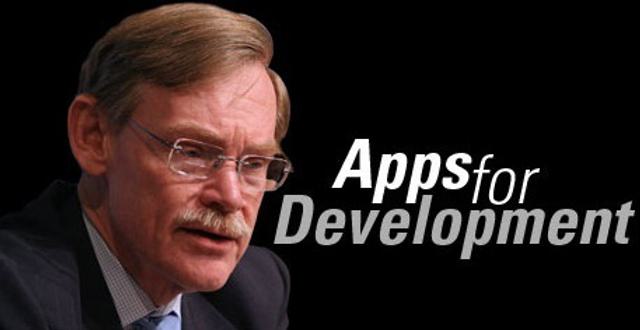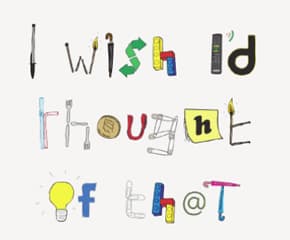The best developments of 2010.
- Written by
- Lucy Innophoria
- Added
- January 06, 2011

Hi everyone,
Now that Christmas is over and the New Year is here there’s no better time to reflect on some of 2010s coolest developments (and there were certainly quite a few) to decide which we’d most like to inspire our work as we begin afresh in 2011.
As far as I am concerned, 2010 was choc-full of some of my favourite things: innovation, interaction, inspiration, shoes..! There was so much going on that it’s difficult to know where to start. In a bid to keep this column relatively short, however, and not clog up SOFII’s servers, I’ve picked the three that I believe will most aptly serve as food for thought as we begin to plan our programmes for this year.
1) Apps

2010 was, without a doubt, the year of the smartphone app. At the beginning of the year, an article in Wired Magazine predicted that smartphone applications would soon overtake normal, desktop software applications, leading to a massive change in the way people communicate.
And they were pretty spot-on. According to a report released at the end of December 2010 by the International Data Corporation (IDC), app downloads reached 10.9 billion in 2010, a number now expected to rise to 76.9 billion by 2014.
As far as the social sector is concerned, this could have massive implications. In October of this year, the World Bank group launched its ‘apps for development’ competition, challenging developers to create software applications, tools, data visualisations or ‘mash-ups’ that use the World Bank data catalogue and address one of the eight millennium development goals.
Apps can also be used to create fun or interactive elements to our programmes, such as games and augmented reality. For example, the iStethoscope is already up and running and 2011 is expected to see the launch of applications that will allow for instant diagnosis and even in-the-field scanning and ultrasound technology. Not bad for something that fits in your pocket.
2) Interaction
Some of my favourite campaigns and programmes of 2010 from both the social and commercial sectors were the ones with the strongest interactive elements. There’s nothing I like more than being involved in an organisation’s programmes and causes, and seeing the results of my efforts, before being asked to commit financially.
My favourite one from this year was an interactive installation from Pathways to Housing, an organisation based in the US that provides assistance to homeless people. At the beginning of this year, in freezing temperatures, Pathways to Housing set up an interactive installation in the streets of New York using a laptop and a projector. There, they projected a figure of a homeless man sleeping on the pavement with a message to passers-by saying ‘To get him off the streets, text HOME to 56612’. When a passer-by stopped to send a message, the man in the projection stood up and walked through the door of his virtual house. Everyone was given the option to send a five-dollar donation via SMS and around 30 per cent of the passers-by that participated in the projection were converted into regular donors.
According to the CEO of Sarkissian Mason, the agency responsible for the installation, ‘Technology is dramatically changing the model of charitable giving: for New Yorkers, we thought providing not only a simple way to give but also a demonstration of what their donations can do – help get homeless individuals off the street – was a creative and compelling way to use this new technology’.
Another great interactive campaign was UNICEF’s dirty water vending machine. This vending machine was placed in a busy US street offering consumers the opportunity to buy a bottle of dirty ‘drinking water’ for just a dollar. This was a great way of educating supporters on the impact of contaminated drinking water in developing countries, while donating one dollar to provide a child with clean drinking water for 40 days.
3) Gaming
My final favourite development of 2010 is, without a doubt, the massive surge in gaming.
I dedicated an entire column to gaming in October so I won’t go into it again too much. Just to say that as people are currently spending more on video games than any other form of entertainment, including DVDs, recorded music and even cinema tickets, this is a medium that really must be incorporated by NGOs in order to get people involved, in a positive and fun way, in their programmes. Even Premal Shah, President of Kiva.org, believes that his organisation’s most important competitor is Zynga, the gaming giant responsible for internet classics such as Farmville.
My team at Innophoria has recently started a great new project called Innophoric Watch, a trend-spotting platform for the social sector. The first edition is called ‘Permission to Play’ and takes an in-depth look at gaming and its importance to NGOs. It’s well worth a read for those who are considering implementing a gaming aspect into their programmes, and even those who aren’t quite sure yet.
So as my New Year’s gift to you all, why not check out the first edition of Innophoric Watch.
Simply click here and enter
Password: play
Wishing you all an innophoric new year and a 2011 filled with inspiration
Love Lucy xx
© Lucy Innophoria's article was first published on SOFII in 2011.
















